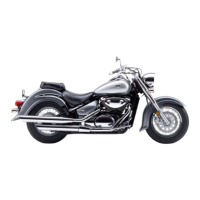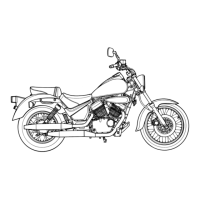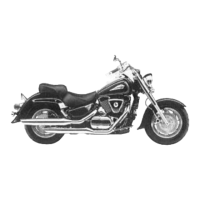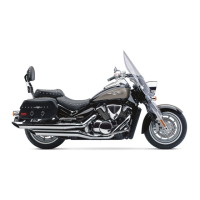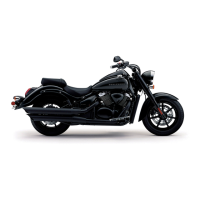1-4
Emergency stopping and swerv-
ing are techniques that you
should practice and master before
you find yourself in an emergency
situation. The best place to prac-
tice such techniques is in a con-
trolled environment such as the
Motorcycle Safety Foundation’s
(MSF) rider training courses. The
MSF’s Motorcycle Rider Courses
(fundamental techniques) and
Experienced Rider Courses
(advanced strategies) present
hands-on instruction of the basic
principles of motorcycling and a
variety of accident avoidance
maneuvers. Even a seasoned
motorcyclist can improve his or
her riding skills, and pick up a few
new skills, through these courses.
Some insurance companies even
offer discounts to course gradu-
ates.
SPECIAL SITUATIONS REQUIRE
SPECIAL CARE
Of course, there are some times
when full-force braking is not the
correct technique. When the road
surface is wet, loose, or rough,
you should brake with care. When
you’re leaned over in a corner,
avoid braking. Straighten up
before braking. Better yet, slow
down before entering a corner.
In these situations, the traction
available between your tires and
the road surface is limited. Over-
braking when traction is limited
will cause your tires to skid, possi-
bly resulting in loss of directional
control or causing you and your
motorcycle to fall over.
KNOW YOUR LIMITS
Always ride within the boundaries
of your own skills. Knowing these
limits and staying within them will
help you avoid accidents.
A major cause of accidents involv-
ing only a motorcycle (and no
cars) is going too fast through a
turn. Before entering a turn, select
an appropriately low cornering
speed.
Even on straight roads, ride at a
speed that is appropriate for the
traffic, visibility and road condi-
tions, your motorcycle, and your
experience.

